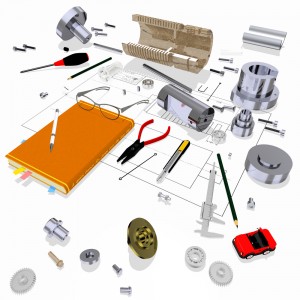If you’ve already embarked on the journey of pursuing your invention idea, you know the process can be an exciting, but confusing one.
 If you haven’t yet started, you may find yourself stuck in either the excited or confused category.
If you haven’t yet started, you may find yourself stuck in either the excited or confused category.
A common question for new inventors is “Should I make a prototype of my idea?” And, that question is common for a couple of reasons. Of course, when you come up with a new idea, the first thing you want to do is see it and touch it. So, the logical thought is to create it, then and there. Plus, if you don’t have something tangible, you may question whether or not a company will even be interested in your invention idea. How will they see it the same way that you do?
But, taking your idea from your mind and putting it in your hands can be a difficult and expensive thing to do. Here are some things to consider:
– Do you have the time to create a working prototype?
– What kind of materials will you need to make a prototype?
– How much will it cost to bring your idea to life in the form of a prototype?
The truth is, when it comes to a new product, a prototype is more appealing than a drawing and companies will often go through many prototypes until they’re happy with the final product.
When we present our clients’ ideas and prototypes to corporations for possible licensing, it’s not always the first one that is accepted. In fact, it rarely ever is. If a company shows an interest in one of our clients’ ideas, we may send a product back to design over and over again, to test things like:
– Are we using the same materials as our target corporation?
– Is the product cost-effective?
– Can the product be easily mass-produced?
So, while you ultimately may want to have a prototype to present your idea, at the early stages of submitting your idea to our firm, you are not required to have one ready. The confidentiality agreements that we provide will allow us to discuss your idea with you and then move forward to designing, engineering, prototyping and beyond.